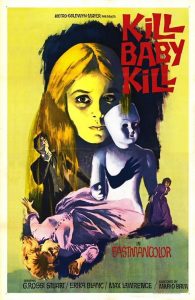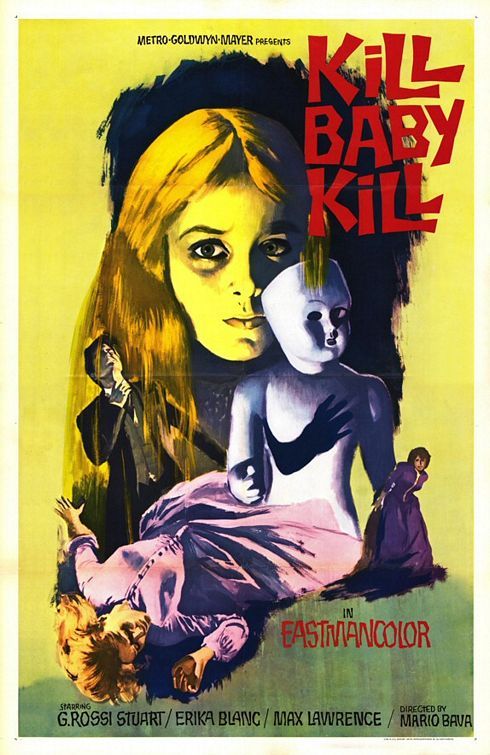
Mario Bava may well be the most influential horror director of all time. His works have admittedly served as inspiration not only among horror directors, but well-regarded auteurs such as Federico Fellini, Tim Burton and David Lynch. He’s basically responsible for how horror films are made today, as his “Twitch of the Death Nerve” and “Blood and Black Lace” single-handedly spawned the whole slasher craze of the 70’s and 80’s.
In the case of “Kill Baby, Kill”, Bava created the footprint for all ghost stories/haunted house films that came after, ranging from Stanley Kubrick’s “The Shining” and Bava’s own “Lisa and the Devil” (where he would elevate a similarly structured story to an art level) to almost every single Asian horror movie being produced nowadays (without Melissa Graps there would be no Sadako), and it still is one of the best of it’s kind, even if the years that passed did affect it a little.
The story, which follows a doctor who comes to investigate a mysterious death at a remote village cursed by an evil spirit, starts out slowly but menacingly, with a unrelenting sense of dread that builds up every minute. Something lurks in the dark, patiently waiting to attack, and gradually making it’s terrifying appearance as the secret behind the strange murders become more and more evident, all building up to a deliriously nightmarish and gorgeously photographed final act, with Bava’s demented, colorful visual style at it’s terrifying best.
The film’s dream quality is further enhanced by the rather stiff performances, and whether it was intentional or not, it certainly works for the best. Giacomo Rossi Stewart does his best as a sympathetic, suave hero, and has great chemistry with Erika Blanc, who performs a more ‘virginal’ role for a change.
Carlo Rusticelli’s score is not as memorable as his other works for the director, and is often overused in the picture, but doesn’t truly damage it. Only one could only wish a better soundtrack was used to make it’s hypnotic tone, well, even more hypnotic.
Much like in Argento’s “Inferno”, some have complained about the lack of action in the final 5 minutes or so, as it would’ve seemed obligatory that there would a more epic confrontation in the end. That being said, the ending does not bother me, and though it could’ve been slightly more elaborate, it perfectly matches the rest of the film – a near-perfect ending to a near-perfect classic.
Overall, a flawed, but truly unique and throughly fascinating supernatural opus from the all time Maestro of Fear

